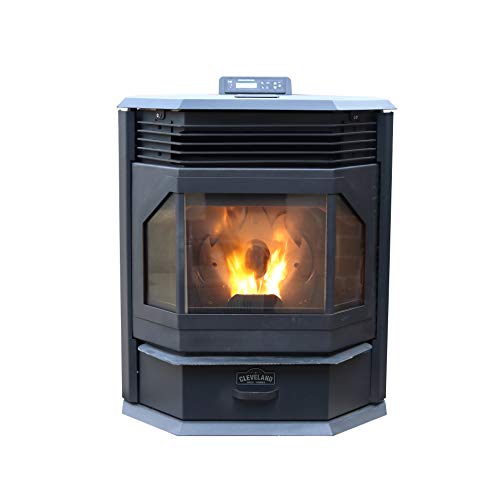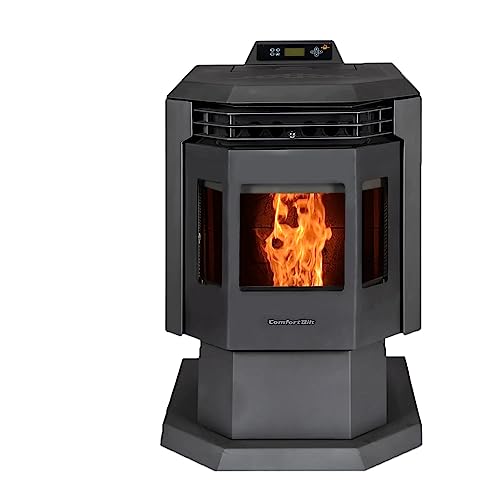Five Killer Quora Answers On Indoor Pellet Stove
페이지 정보

본문
 An Indoor Pellet Stove Requires Proper Installation and Maintenance
An Indoor Pellet Stove Requires Proper Installation and MaintenanceAn indoor pellet stove provides supplemental heating and can reduce your energy costs. To operate safely it needs regular maintenance and cleaning.
 Pellets begin their journey in the hopper of the stove that holds the fuel until an auger sends them to the combustion chamber. Hopper capacities range from 40 to 120 pounds.
Pellets begin their journey in the hopper of the stove that holds the fuel until an auger sends them to the combustion chamber. Hopper capacities range from 40 to 120 pounds.Energy efficiency
The quality and type of pellets used will determine the energy efficiency of the stove. Pellets are small cylinders that can be combustible. They consist made of sawdust compressed and other wood materials that provide an eco-friendly, renewable home heating alternative. Pellets with a high-quality, low-dust content generally burn hotter for longer periods than less expensive pellets, and produce more heat with less waste. Pellet stoves don't need a chimney and can be installed in homes that do not have a chimney, however they need a certified double-walled venting system that is in compliance with local codes and regulations.
Like gas stoves patio pellet stove stoves also utilize blowers to aid in the combustion of the pellets. A combustion blower pulls exhaust gases out of the vent and introduces air to the burn pot. This helps keep the flame burning efficiently. Many manufacturers offer air intake blowers that draw air from outside to ignite and help maintain healthy indoor air.
As with other wood fires, pellet stoves inserts stoves require electricity to provide power to their controls, fans and augers that are used to feed the pellets into the burner. This dependence on electricity can make them vulnerable to power outages and require a backup electric supply for safe operation.
Wood pellet stoves are capable of venting their flue gas through an exterior wall, or through the roof. The absence of a chimney allows the stove to be installed in areas that gas stoves are not permitted by the location of gas lines. For instance in a basement that has been converted or garage.
The system of venting for pellet stoves requires double-walled pipes that are certified, usually three or four inches in diameter, to prevent exhaust fumes from escaping into the living space. The majority of manufacturers recommend a 3-to-5-foot (0.91 to 1.52 m) vertical rise for vents, although you can also utilize a horizontal vent pipe in certain situations.
Regular maintenance of a pellet stove is essential to ensure its performance as well as safety and EPA certification. Cleaning the ash pan and the combustion blower is essential to avoid the buildup of creosote that is flammable. An ash vacuum, which is similar to a shop vacuum but designed specifically to remove ash debris, is available to assist in this task.
Convenience
Pellet stoves are a convenient way to get indoor heat at the touch of a button. They burn cleaner than wood and emit fewer harmful particulates into the air. They are also more compact than traditional wood-burning fireplaces, making them a great choice for homes that have small outdoor storage space. These stoves can be combined with a thermostat, allowing homeowners to manage heating levels at any time using the smartphone or computer.
Similar to other appliances that burn fuel, pellet stoves require routine maintenance to operate at their highest efficiency. Regular cleaning of the stove hopper and ash pan prevents accumulation, and the flue vent needs to be cleaned on a regular basis to minimize soot accumulation. A backup power source must be added to ensure that the stove will continue to function in the event of a power failure.
Pellet stoves are operated using an automated system, which requires only the pouring in of fuel pellets pre-packaged. The auger then feeds the pellets into the combustion chamber, which then is ignited by an electric ignition mechanism. The resulting flames are used to heat a home as hot air circulates through the room.
Certain models are certified by the EPA and have a rating of high energy efficiency that means they generate more heat per unit of fossil fuel employed. Apart from increasing comfort in the home, this level of efficiency can cut down on the cost of energy and greenhouse gas emissions.
The cost of operating a pellet stove may fluctuate depending on several factors, such as the location, pellet prices and availability and the frequency of use. Pellet stoves can be more affordable than other forms of heating and provide more comfort and convenience.
Pellet stoves are more expensive upfront than other heating options. However their low maintenance and operating costs can help homeowners save money over the course of. They also require less chimney inspections and offer an even heat source than wood burning stoves.
In order to ensure optimal performance, Best pellet stoves stoves should be used with a manufacturer-recommended brand of fuel. Incorrect fuels can harm the appliance and cause costly repairs. They also decrease the lifespan of the stove by affecting the overall operation. It is also crucial to clean the clinker that has accumulated at the bottom of the stove every week or on a daily basis, and also cleaning the burn pot and the flue vent.
Maintenance
As with any major appliance, pellet stoves need regular maintenance to ensure their safe and efficient operation. Responsible maintenance minimizes unforeseen issues and lets you enjoy comfortable, efficient heating throughout the winter. By staying on top of specifics such as creosote and rust, you can avoid expensive repairs and extend the life of your pellet stove outdoor stove.
A few essential cleaning products and procedures are needed to clean the pellet stove. Weekly routines include emptying the ashpan, scraping the burner and wiping the glass window. You might also want to purchase an ash vacuum cleaner to ensure more efficient and thorough cleaning.
Stove performance varies greatly based on the quality of the pellets employed. The top pellets are more consistent in burning producing less ash and reducing the frequency of cleaning requirements. Avoid low-quality pellets because they usually contain fillers that cause poor combustion and an excessive amount of ash production.
The heat exchanger is the heart of the pellet stove. It converts the combustion of wood pellets into clean hot air that is then distributed throughout your home. A dirty heat exchanger reduces the efficiency of heating and can lead to safety problems. A skilled technician can carry out an extensive inspection and cleaning of the heat exchanger.
It is crucial to properly store wood pellets for the maintenance of pellet stoves. Store them away from concrete floors as this may let moisture in. Use pallets or a raised surface to keep the pellets off the ground. This will help maintain the pellets' quality and ensure that they are dry prior to you make use of them.
It is recommended that you have your pellet stove professionally clean at the beginning and end of every heating season. The frequency of professional cleanings will depend on the frequency of use and the amount of creosote buildup.
Aside from scheduled cleanings, an experienced technician will examine the unit to find potential problems and address them promptly. For example, if you notice a slow-burning flame that is sooty or orange it is a sign that the burn pot's air intakes are blocked. A professional will also check the vent system for proper installation and repair. They will also grease and replace any components that have corroded or worn.
Safety
Pellet stoves create heat by burning small pellets composed of wood waste and sawdust. The pellets are then blown through a venting system that exits outside the home. They are energy efficient and can rapidly heat a space. But, as with any appliances that are combustible, they need proper installation and maintenance in order to keep them safe from fire and other dangers.
They also have limit switches as boilers and furnaces. These limits are designed to stop the pellet stove from operating beyond its intended limits if something goes wrong. The stove will shut down immediately if there is a problem to prevent injury or damage to people or pets.
These devices along with limit switches, also feature fans that blow exhaust to ensure proper combustion and stop carbon monoxide from forming. Carbon monoxide is a non-odorous and colorless gas, can cause death when inhaled. Carbon monoxide detectors can alert you if the levels of CO are too high in your house.
The first step to ensure your pellet stove safe is to adhere to the manufacturer's guidelines when it comes to sizing and installing the venting system. A special vent pipe made of steel typically extends from the stove, through a hole that is pre-cut in the wall, and then out through a wall cap that is outside of the home. Another crucial safety measure is to keep the area free of obstructions and to keep any flammable objects away from the venting systems.
It is recommended that you have your pellet stove checked by a professional every year. The technician can then assess the condition of all components including the hopper all the way up to the pressure switches. The technician will make recommendations for repairs or replacements if the stove shows signs of wear and tear or isn't performing well.
Certain individuals are more susceptible to health risks that come with the use of pellet stoves. This includes those suffering from respiratory issues and children who are young. Regular health checks are recommended for those who utilize pellet stoves to check their respiratory health.
- 이전글How To Fix Tilt And Turn Windows Tools To Streamline Your Daily Lifethe One How To Fix Tilt And Turn Windows Trick That Every Person Should Be Able To 24.12.11
- 다음글Who Is Car Accident And Why You Should Consider Car Accident 24.12.11
댓글목록
등록된 댓글이 없습니다.